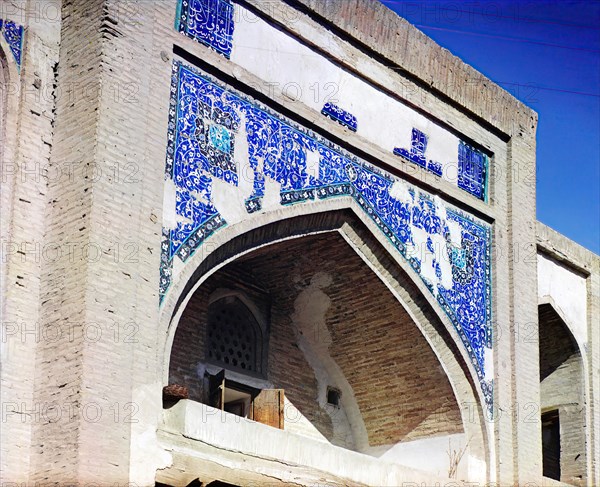
Sujet
Above entrance to Gauk man medrese, Bukhara, between 1905 and 1915. Creator: Sergey Mikhaylovich Prokudin-Gorsky.
Légende
Above entrance to Gauk man medrese [sic], Bukhara, between 1905 and 1915. The Khoja-Gaukushan complex includes a madrassa and a mosque. It was built in 1570 during the reign of the Uzbek Khan Abdullah II. Russian chemist and photographer Sergey Prokudin-Gorsky (1863-1944) was a pioneer in colour photography which he used to document early 20th-century Russia and her empire, including the vanishing way of life of tribal peoples along the Silk Route in Central Asia. In a railway-carriage darkroom provided by Czar Nicholas II, Prokudin-Gorsky used the three-colour photography process to record traditional costumes and occupations, churches and mosques - many now Unesco World Heritage sites - as well as modernisation in agriculture, industry and transport.
Crédit
Photo12/Heritage Images/Heritage Art
Notre référence
HRM24A06_080
Model release
NA
Property release
NA
Licence
Droits gérés
Format disponible
57,2Mo (3,4Mo) / 42,0cm x 34,1cm / 4960 x 4030 (300dpi)